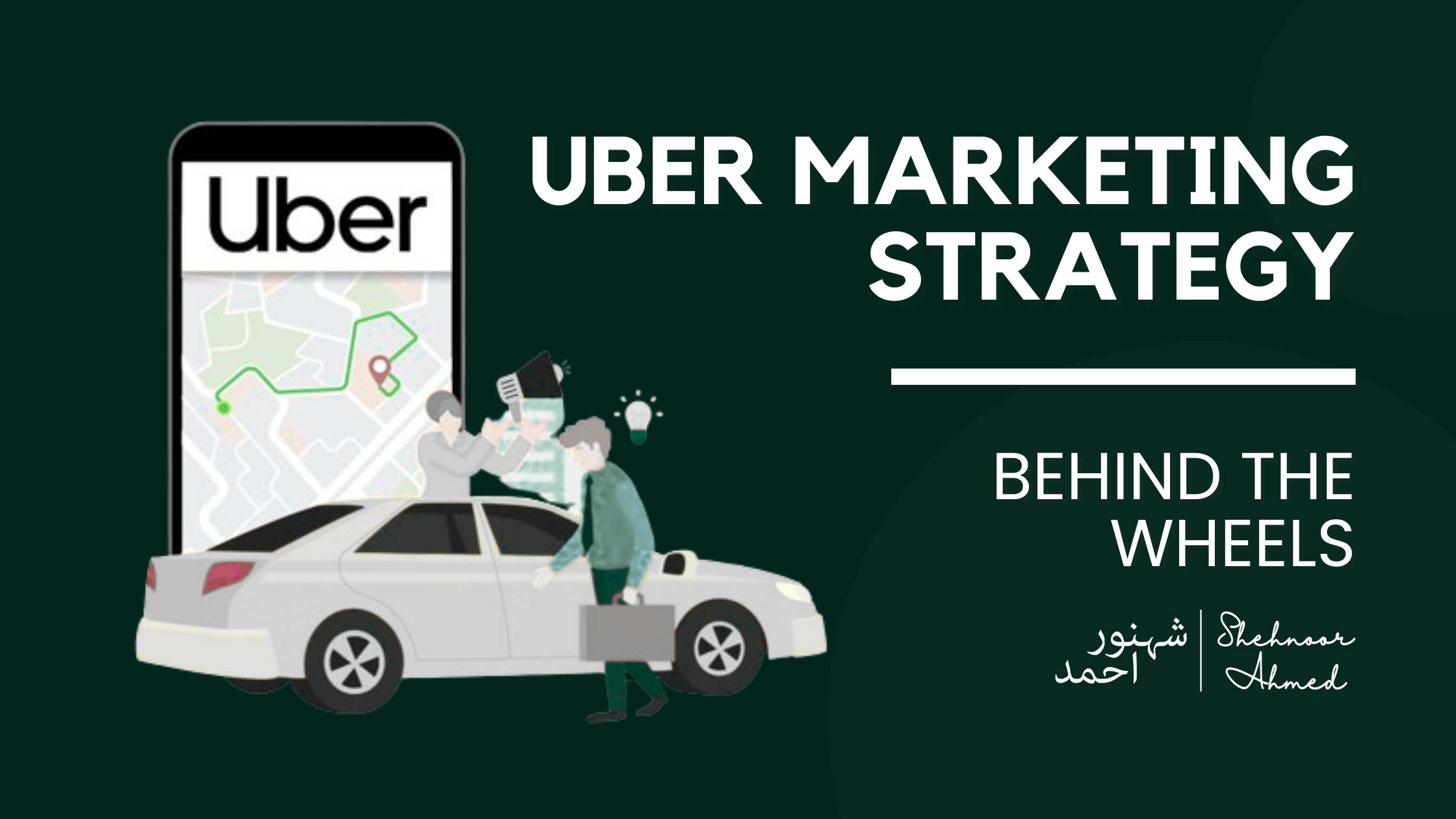
Uber Marketing Strategy Analysis
Ride-sharing is something that the instant the word escapes your lips you can’t help but think of Uber. Uber, though, is not merely a transportation company, it’s a worldwide behemoth with an off-the-wall marketing plan. With millions of customers worldwide, Uber has built a kingdom out of its services, and most of the success comes from the intelligent marketing choices over the years. This analysis will dive into Uber marketing strategy, focusing on how the company’s unique approach has not only disrupted the transportation industry but also helped it branch out into new services. If you’re a business owner looking to scale your operations and refine your marketing approach, understanding Uber marketing strategy could provide valuable insights. As Shehnoor Ahmed a Digital Marketing Influencer often points out, there’s a lot to learn from companies that innovate and adapt continuously. Uber’s Mission and Vision: The Starting Point of All That Uber Does Every successful business begins with a solidly established vision and mission, and Uber is no exception. They are motivating slogans that they use in every business decision that they make, be it from marketing strategies to handling customers. Uber’s Mission: Empowering People With Transport Uber’s mission is a simple yet potent one: “We ignite opportunity by setting the world in motion.”. Fundamentally, Uber’s mission is about something more than moving people from point A to point B. It’s about enabling people to create opportunities for themselves, whether the driver to make a living or the rider to access cheaper and more efficient transport. That feeling of empowerment has reached the lives of hundreds of millions of users globally, and it’s something that permeates Uber’s advertising. From a marketing perspective, Uber can engage with its users by providing not just a ride, but also by presenting itself as an enabler of opportunity. By emphasizing the notion that Uber service actually does add value to its users, Uber marketing is far more about the opportunity to take that ride than about the ride itself. Uber’s Vision: A Future Where Transportation is Seamless and Accessible for All Uber’s vision is equally bold: “Transportation as reliable as running water, everywhere, for everyone.“ This utopian dream is a reflection of Uber’s mission of making transportation as convenient and reliable as such things as water or electricity. If you need a ride, a meal delivery, or even a shipping service, Uber’s vision is to bring these services to your doorstep wherever you are and whenever you want them. This future vision maintains Uber’s marketing to the concept of global accessibility and user-focused innovation. Uber isn’t merely working to provide transport needs today; it’s developing the future of mobility and interaction with services. How Uber Makes Money: A Diversified Business Model Every company’s marketing plan is intricately tied to the revenue model of the company, and that holds true for Uber as well. Let us see how the various channels of earning money have a direct impact on the majority of Uber marketing strategy. Ridesharing: The Heart of Uber’s Business Ridesharing, naturally, is Uber’s cash cow. It’s how Uber first broke into the transportation industry, and it’s still the company’s biggest source of income. Uber gets a cut of each ride fare, typically 15% to 30%, depending on the market. The model is fairly simple, but Uber has continually tweaked it over the years to maximize profitability. Uber’s success in monetizing demand for cheaper, more convenient rides has enabled it to capture tens of millions of drivers and riders. And Uber marketing strategy, namely, its emphasis on affordability and convenience, has helped fuel growth in this crowded segment. Uber Eats: Leveraging the Model into Food Delivery As its brand expanded, Uber broadened its business model from ridesharing to food delivery through Uber Eats. Through Uber Eats, customers can place orders for food from restaurants around them and get food delivered to their doorsteps. This has been one of the main sources of revenue for Uber, particularly as food delivery demand keeps growing. Uber Eats’ marketing strategy is all about convenience and speed, entirely in line with Uber’s larger brand narrative. With targeted digital advertising, special deals, and bundling with brand-known restaurants, Uber Eats has attained household name status in food delivery using the same app that supports Uber ridesharing. Uber Freight: Shipping Items, Not Passengers Uber has also entered the logistics industry with Uber Freight, which connects companies that need to move goods with truckers. It is tracking a new industry but a much-needed new addition to Uber’s offerings, diversifying its revenue streams further. Uber’s justification here is providing companies with a simpler, more efficient way of handling freight and providing truck drivers with more chances to make money. Uber Freight is a new business segment for the company, demonstrating that Uber can apply its platform model to sectors beyond consumer transportation. Advertising: Monetizing the Platform Itself Uber also has another revenue stream through ads. With its hundreds of millions of active users, Uber is offering companies the ability to advertise on the Uber platform. The ads can be targeted based on geography, past activity, and interests, hence making them extremely effective to reach the desired audience at the desired time. This other source of revenue contributes to strengthening the financials of Uber further and offers businesses an opportunity to reach an actively engaged user base. Subscriptions and Leasing: Creating a Repeat Customer Stream Uber also entered the realm of subscriptions, as with offerings such as Uber One, a kind of rewards program with cheaper trips and upgraded treatment. Subscriptions generate stable, repeat streams of revenue in addition to interaction with the Uber ecosystem. Besides, Uber collaborates with car leasing companies that allow individuals who don’t have a vehicle to drive for Uber. Such a business model enables Uber to get more drivers without the need to own a fleet of vehicles. Uber Marketing Strategy: Revolutionary Strategies for a Global Brand Uber marketing campaign is as differentiated and innovative as its business itself. Let us



